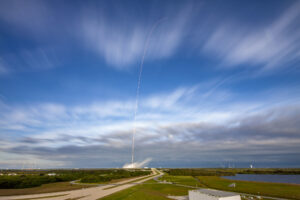FAA launch office, with mounting workload, prioritizing reorganization over expansion

WASHINGTON — The Federal Aviation Administration’s space-related workload is growing faster than its workforce, but the agency wants to complete a reorganization focused on efficiency before seeking more personnel.
That growing workload, the office’s leader warned Friday during a media teleconference, may be exacerbated by planned revisions to regulations for launch licensing. The public comment period for those revisions closed Aug. 19.
Since 2012, the FAA’s Office of Commercial Space Transportation, or AST, has increased staffing by 40 percent, according to Wayne Monteith, the associate administrator of that office. Its workload, in contrast, has grown tenfold, he said.
“While 40% seems really really good … when you’re looking at a 1,000% increase in the workload, something’s got to give,” Monteith told reporters during the Aug. 15 teleconference.
AST licenses U.S. commercial launches, and reentries such as those conducted by SpaceX’s reusable Falcon 9 first stages and Dragon capsules. The agency used to oversee a single-digit number of launches annually, Monteith said, but estimates that by 2021, that number will likely be in the mid-50s. An FAA spokesperson said the agency anticipates licensing 33 to 44 launches this fiscal year.
The FAA began a reorganization of AST this spring with a focus on making the office more efficient. Monteith said that the office does want to hire more people, but must complete the reorganization before charting any significant expansion.
“It’s inappropriate to go to the American people and say we need more money, we need more people without being the absolute most efficient, effective organization we can be first,” he said.
AST currently has vacancies it seeks to fill, Monteith said. The office is authorized to employ 108 people, but only has 97 currently on staff, he said.
Part of the challenge filling those vacancies is competing for talent with commercial space companies that can pay employees more than AST, he said.
Monteith said the goal is to complete AST’s reorganization by the end of this year. Steps taken so far include consolidating staff that work on spaceport-related topics within an office of spaceports created earlier this year. Systems engineering experts are also being centralized, he said.
AST is also scrutinizing any work that could be duplicative among other agencies. Monteith said AST is looking closely at ground safety as an area that may overlap with the Air Force, which operates the major U.S. launch ranges.
“Where we don’t have a demonstrated value-added, we’ve got to get rid of those things,” he said. “We do not have the luxury to be inefficient.”
Monteith said AST is working on a memorandum with the Air Force to avoid duplicate work.
One factor expected to further increase AST’s workload is the introduction of new licensing rules currently being debated. Monteith said the proposed rules, though meant to streamline the process for industry, increase the burden for AST.
AST has received more than 100 comments during the rulemaking process, which has received a mix of praise and criticism from industry. Monteith declined to estimate when AST would release a final rule, saying the date depends in large part on the comments received.
Of the 100-plus comments, Monteith said the majority were requesting a longer comment period. The FAA, having already extended the comment window from July, choose not to extend it again, he said. The next most common request was for a public meeting, which AST also chose not to pursue. Instead the agency has conducted several one-on-one meetings with commenters, he said.
Monteith estimated that just over 20 substantive comments had been received as of Aug. 15.
from SpaceNews.com https://ift.tt/2MpbkGL
Comments
Post a Comment